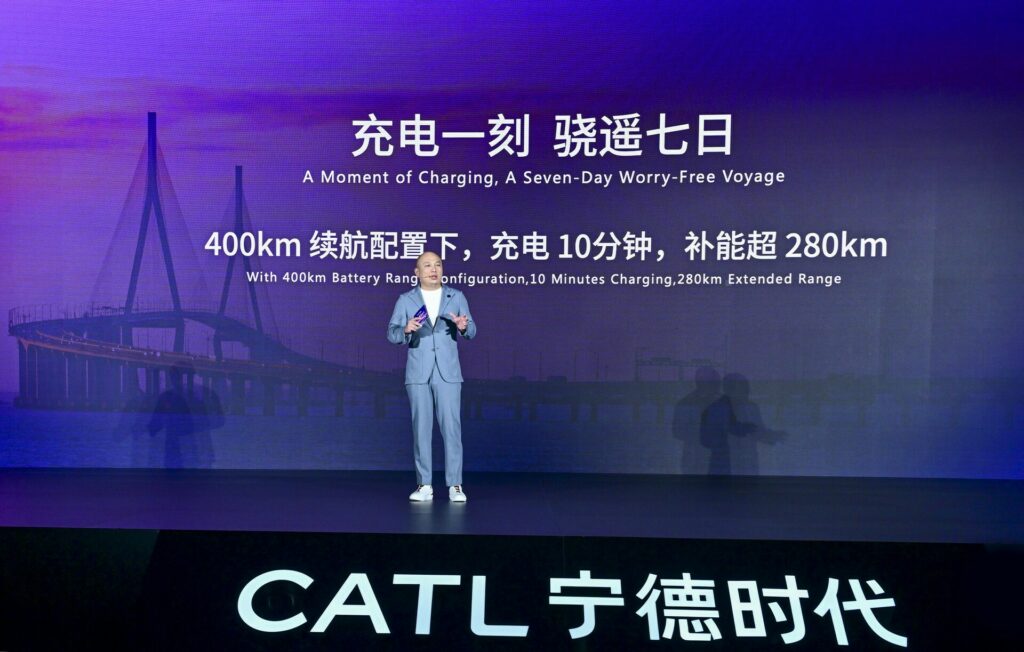Proton’s First EV Looks Like A Porsche Ordered From Ali Express
- The Proton e.MAS 7 has debuted in Malaysia as the automaker’s first electric vehicle.
- This SUV is a rebadged Geely Galaxy E5, equipped with a 215-hp front-mounted motor.
- The compact e.MAS 7 offers 410 km range, competitive pricing, and stylish color options.
Malaysia’s Proton has just unveiled its first-ever EV, the e.MAS 7, an SUV that wants to stand out but doesn’t quite stick the landing. Beneath its Porsche styling cues and ambitious marketing, the e.MAS 7 is, at its core, a rebadged Geely Galaxy E5. It’s a straightforward exercise in badge engineering that doesn’t break new ground but does manage to look modern.
More: Huawei’s Maextro S800 Looks Like Someone Put A Maybach, A Rolls And A Porsche In The Blender
Let’s start with the basics. The Proton e.MAS 7 is a compact SUV that stretches 4,615 mm long (that’s 181.7 inches if you’re too cool for the metric system) and boasts a wheelbase of 2,750 mm (108.3 inches). If you’ve seen the Geely Galaxy, congratulations, you’ve already seen the e.MAS 7. The only visible differences are a Proton badge slapped onto the hood and the glaring absence of the Geely’s illuminated grille. Proton’s big EV debut is essentially the automotive equivalent of putting a new logo on a Word doc template and calling it “custom design.”
Porsche Vibes, but Make It Discount
The e.MAS 7and Galaxy twins borrow some pretty obvious Porsche styling cues. The full-width LED taillights? Yep, straight off a Cayenne. The greenhouse and surface sculpting? Also Cayenne-ish. The paint? Oh, you mean “Quartz Rose,” which just happens to look suspiciously like Porsche Macan EV’s Provence debut color? Totally a coincidence, we’re sure.
Proton also offers four other shades, including Platinum Silver, Turquoise Green, Slate Grey, and Lithium White, with an Indigo Blue interior, in case you’re into low-budget luxury cosplay.
Of course, the Geely Galaxy E5 and Proton e.MAS 7 aren’t the only Chinese-derived EVs borrowing heavily from Porsche’s design playbook. The taillights on the BYD Han sedan and Song L crossover look blatantly inspired by the Porsche Panamera and Cayenne Coupe, just like Geely’s own Galaxy E8 sedan.
Powertrain and Batteries
Back to Proton, the e.MAS 7 shares its underpinnings and specifications with its Geely twin. It rides on Geely’s Global Intelligent New Energy Architecture (GEA) and packs a single front-mounted electric motor producing 215 hp and 320 Nm of torque. It’ll hit 0-100 km/h (62 mph) in 6.9 seconds, which is decent, making it the quickest Proton yet, but still firmly in “That’s fine, I guess” territory.
There are two options for the battery pack with a capacity of 49.52 kWh or 60.22 kWh, allowing WLTP ranges of 345 km (214 miles) or 410 km (255 miles) respectively. As reported by Paultan, Proton claims that the battery retains a health status of 90.5% after 921 complete cycles, which is the equivalent of 400,000 km (~250,000 miles)
Here’s where Proton is banking on the e.MAS 7 standing out—its price tag. The EV starts at RM109,800 ($24,400) and tops out at RM123,800 ($27,500). That’s significantly cheaper than its main rival, the BYD Atto 3, which starts at RM149,800 ($33,259), and is currently the best-selling EV in Malaysia.










